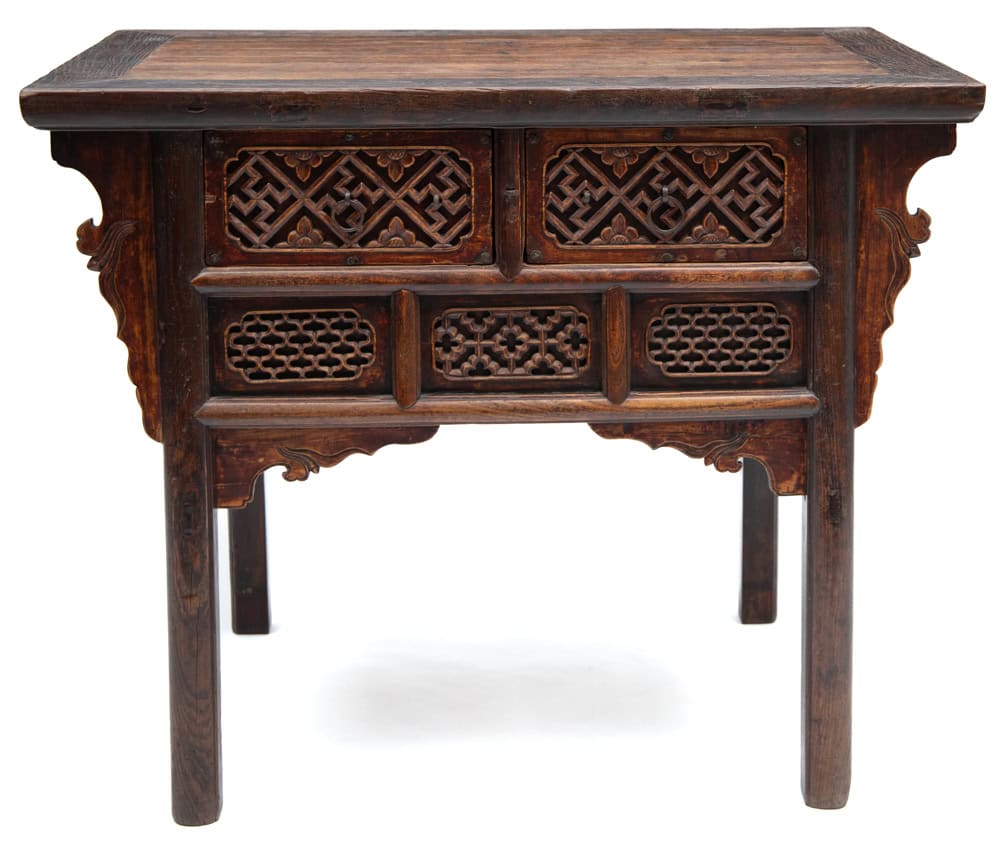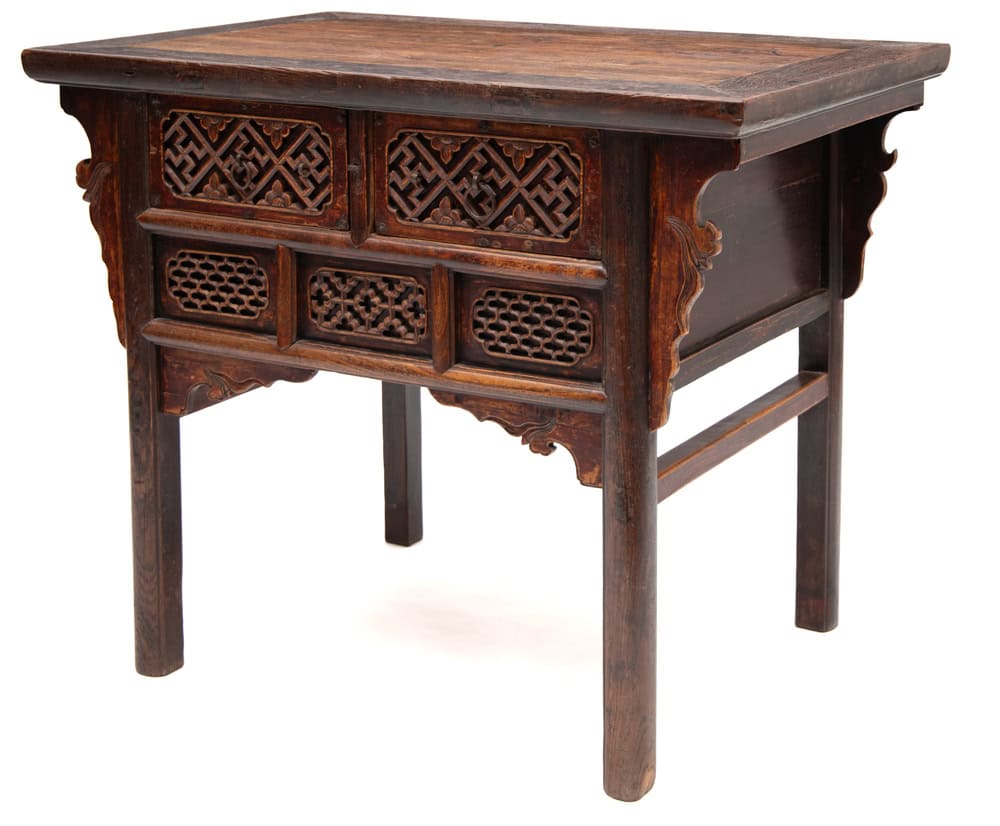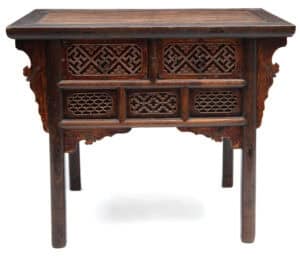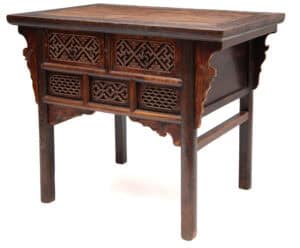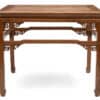Altar table with deep relief long life motifs
$3,995.00
Early 19th century
- purple elm
- 107cmW x 70cm D x 89cm H
A stunning piece with deep relief carved long life motifs. A wonderful option as an entry table in the home.
Origins
In the early periods of Chinese history people sat on mats or low platforms. Most furniture was small and low in keeping with the customs of the day. Temples housed furniture like this altar table. Over the centuries the chair became more popular and during the Song dynasty (960C.E. – 1279C.E.) the shift from mat to chair was virtually complete.
A consequence of this change in lifestyle was the development and evolution of new types of furniture that had decorative as well as functional roles. Altar tables were one type of furniture that found a place in this new style of living and a range of different types came into fashion. This three drawer lacquered altar table with carving may have held the family shrine or items of beauty including porcelain vases with flowers.
Symbolism
This altar table uses purple elm, a darker and rarer timber than the more common northern elm. The drawers have deep relief carving of the character “wan” and peach blossoms. The character “wan” is closely associated with Buddhism and is a symbol of long life. Just as Buddhism came to China from India so this pattern has the same origin. The peach blossom is also a long life symbol. This symbolism stems from the legend of Xiwang Mu, or Queen Mother of the West, lived in the mountains and had a peach orchard where the trees took 3,000 years to mature and the fruit another 3,000 years to ripen. Whoever ate the fruit would live for over 1,000 years. The peach and the flower symbolise long life. The peach motif is repeated in a stylised form on the panels under the drawers.
Chinese antique altar tables like this fit in with a range of decors from traditional to modern. You are welcome to drop in for a visit!

